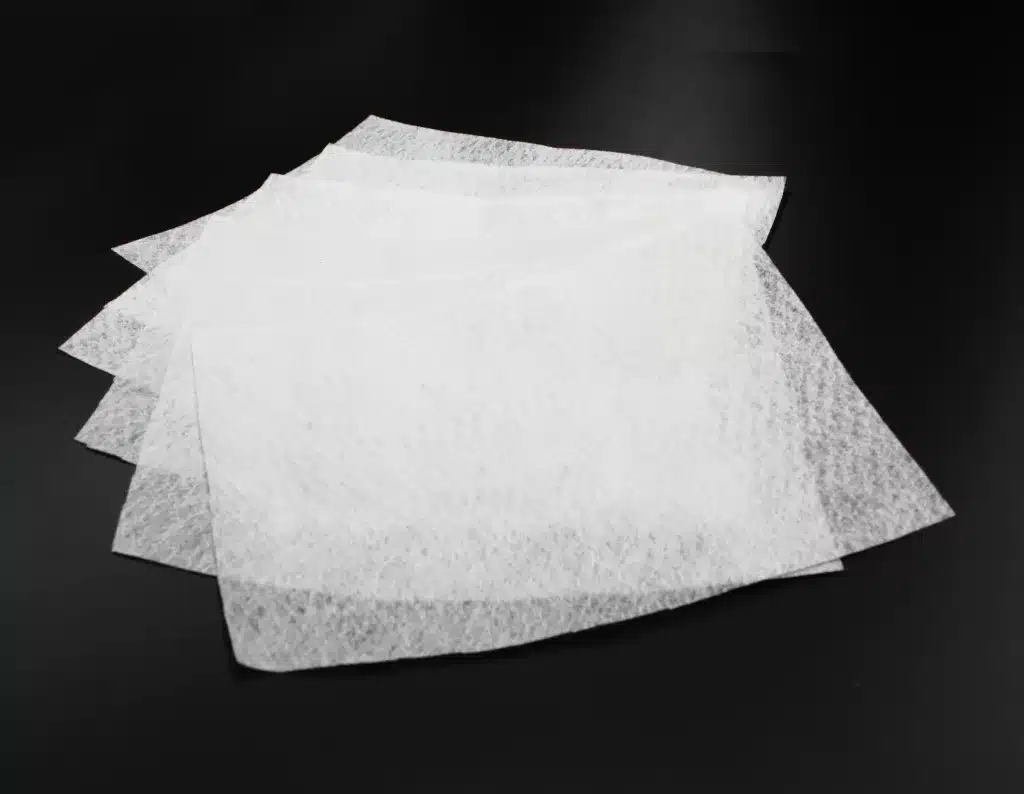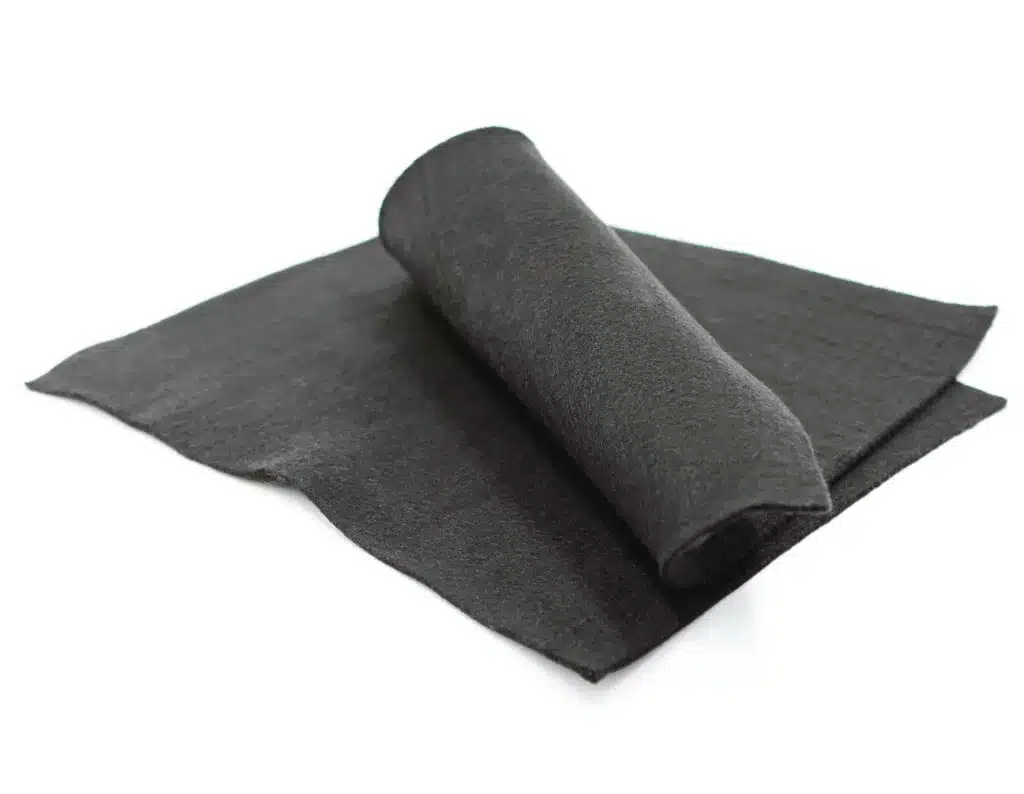+86-159 9860 6917
info@geofantex.com
geofantex@gmail.com
+86-400-8266163-44899
In the world of modern textiles, specific terms like “non-woven” and “geotextile” are often used interchangeably, yet they represent different materials with unique properties and applications. For example, woven geotextiles are renowned for their higher strength values, making them ideal for reinforcement scenarios. In contrast, non-woven geotextiles, recognized for their higher flow rates and permeability, are preferable in scenarios requiring filtration and drainage. This article aims to demystify these terms by exploring the differences between non-woven fabrics and geotextiles, shedding light on their respective uses, characteristics, and benefits in various industries.
What are Non-Woven Fabrics?
Non-woven fabrics are materials made from fibers bonded together by chemical, mechanical, heat, or solvent treatment, without the traditional method of weaving or knitting. These fabrics are typically engineered to have specific properties tailored for various applications, ranging from simple uses like disposable wipes to more complex uses in automotive and medical industries. They are valued for their versatility, cost-effectiveness, and adaptability to specific needs, including filtration, absorbency, strength, and stretch.

What are Geotextiles?
Geotextiles are a type of fabric specifically designed for use in civil engineering and construction projects. Made primarily from polypropylene or polyester, geotextiles can be either woven, knitted, or non-woven, each type selected based on the required performance criteria. These textiles are crucial in geotechnical applications like soil stabilization, erosion control, drainage, and infrastructure protection, offering durability and resistance to environmental conditions.
How do Non-Woven Fabrics Differ from Geotextiles?
While non-woven fabrics are used across various fields, geotextiles are specialized non-woven designed for geotechnical applications. The primary difference lies in their application and the specific performance properties required. Non-woven fabrics are chosen for a broad range of applications based on desired traits such as absorbency or elasticity. In contrast, geotextiles are selected for mechanical properties like filtration, separation, reinforcement, and protection, crucial for construction and environmental projects.
What are the Common Uses of Non-Woven Fabrics and Geotextiles?
Non-woven fabrics find uses in everyday products like hygiene products, filters, and upholstery, and in medical supplies such as gowns and masks. They are preferred in situations where disposability or single-use characteristics are essential. Geotextiles, however, are predominantly used in civil engineering and found in road construction, railroad stabilization, landfills, and water management systems. Their role is often structural, providing stability and support to constructed elements.
Understanding the difference between non-woven fabrics and geotextiles is essential for selecting the right material for specific needs. While both materials share some common manufacturing processes, their applications and the required properties differ significantly. Non-wovens are versatile and used in a variety of industries, whereas geotextiles are tailored for robust, construction-related tasks. This distinction highlights the importance of material science in modern engineering and everyday applications, ensuring optimal performance and sustainability.



Get Free Sample
We’ll respond as soon as possible(within 12 hours)






















